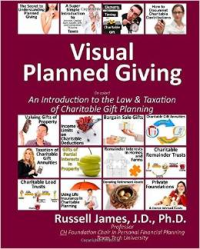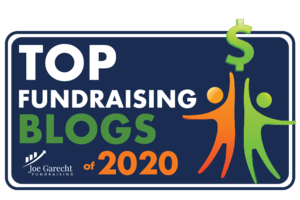From time to time, I come across truly special offers that I’m pleased to share with you.
Today, I want to give you the chance to get not one, but two, FREE books about planned giving written by Texas Tech University researcher Russell James, JD, PhD, CFP:
Visual Planned Giving: An Introduction to the Law & Taxation of Charitable Gift Planning
 This textbook is written specifically for fundraisers or financial advisors seeking to expand their knowledge about charitable gift planning. This introductory book addresses all of the major topics in planned giving law and taxation and features over 1,000 full-color illustrations and images that guide you through complex concepts in a visual and intuitive way. Distilled from his years of teaching Charitable Gift Planning at the undergraduate and graduate levels, James makes this topic accessible and enjoyable for the busy professional.
This textbook is written specifically for fundraisers or financial advisors seeking to expand their knowledge about charitable gift planning. This introductory book addresses all of the major topics in planned giving law and taxation and features over 1,000 full-color illustrations and images that guide you through complex concepts in a visual and intuitive way. Distilled from his years of teaching Charitable Gift Planning at the undergraduate and graduate levels, James makes this topic accessible and enjoyable for the busy professional.
Here are some of the things you’ll learn:
• The secret to understanding planned giving
• A super simple introduction to taxes
• How to document charitable gifts
• Valuing charitable gifts of property
• Special techniques for donating retirement assets, private foundations and donor advised funds
• And much more!
The paperback version of this book retails for $187.98. However, you can get the electronic version for FREE thanks to my friends at MarketSmart, just click here.
American Charitable Bequest Demographics
This book provides an extensive review of the changing nature of American charitable estate planning from 1992-2012 and includes over 50 charts and graphs. James presents information in a simple, visual fashion with each page containing a graph or chart, comments on the importance of the information, and details about the methodology behind the data. Much of the information presented comes from a long-running, nationally-representative, longitudinal survey including information about the final estate distributions from over 10,000 survey respondents who have died during the study.
• Major sections include:
• National demographic trends
• Trends in charitable plans among those aged 55+
• Examination of matured plans of deceased respondents
• Timing of charitable plan changes
• And much more!
The electronic version of this book retails for $9.99. However, thanks to James, you can get it for FREE when you subscribe to this blog site in the right-hand column. You’ll receive an email confirmation of your subscription that will contain a link to the book. (I recognize that your privacy is important, so I assure you that your email address will never be sold.)
Now that I’ve saved you a bundle of money, I’d like to suggest some books you can purchase that will inspire and help you achieve greater results. When you make your purchase, usually at a discount, at The Nonprofit Bookstore (powered by Amazon), a portion of every sale will be donated to charity.
read more »















